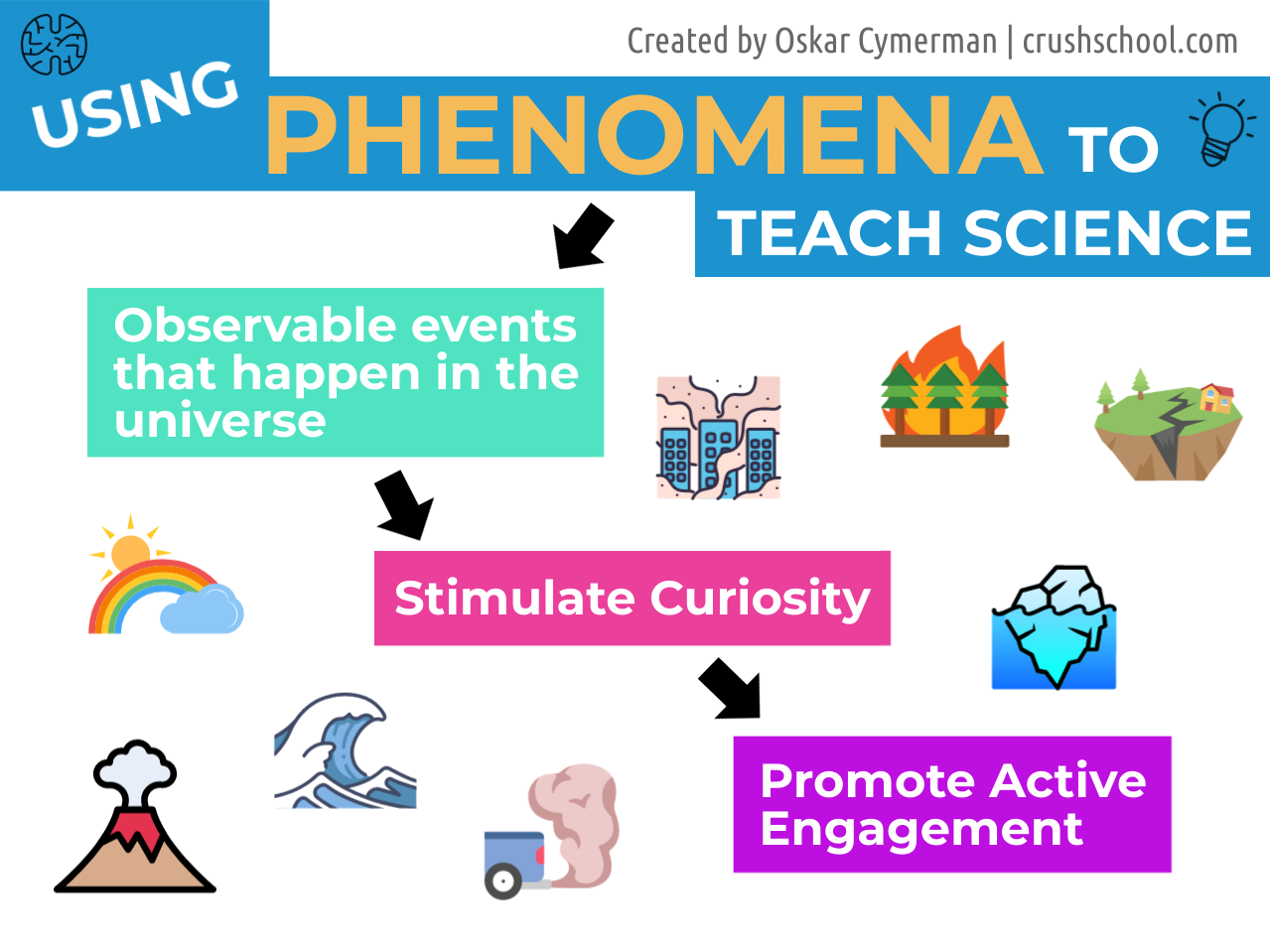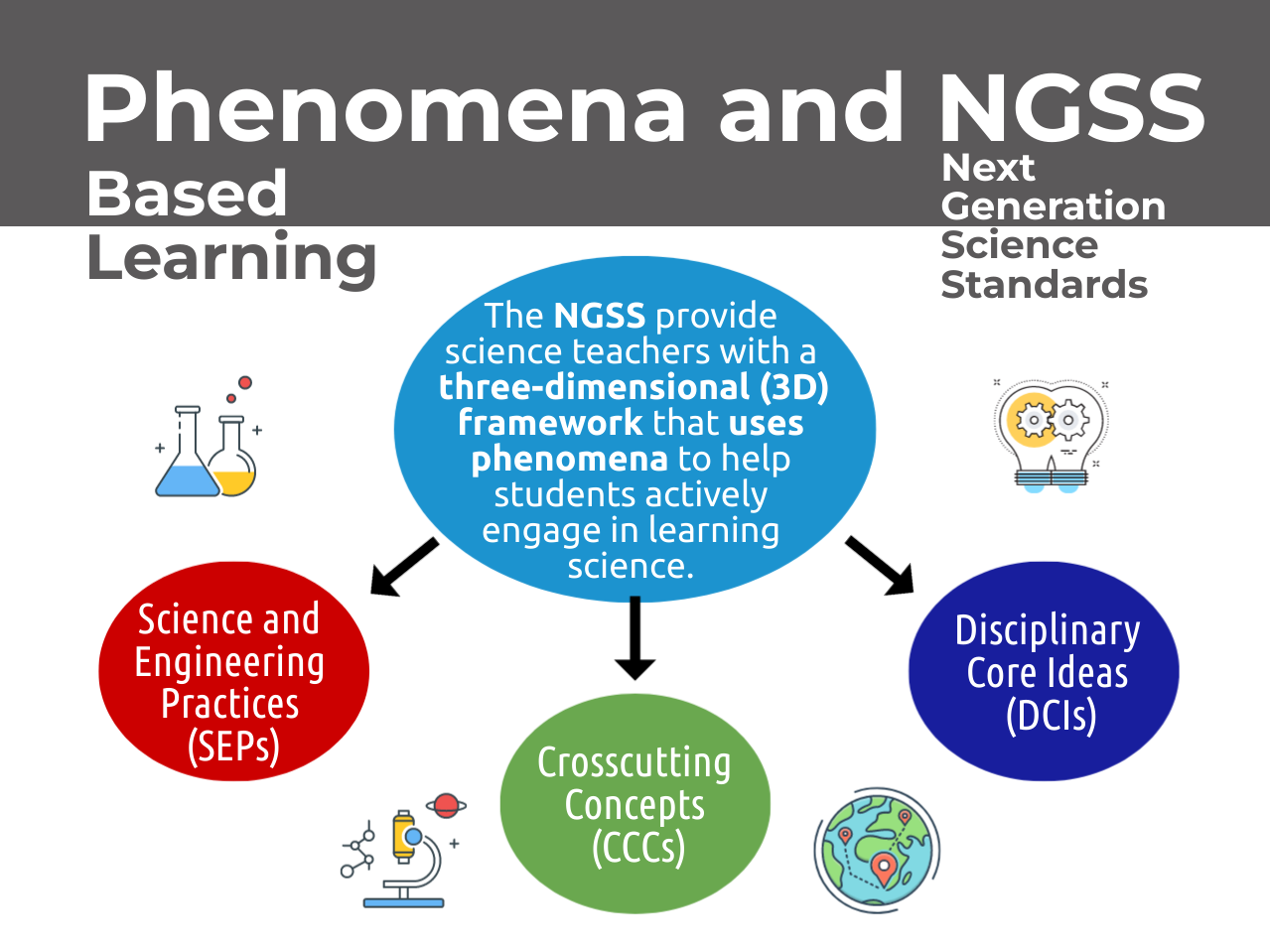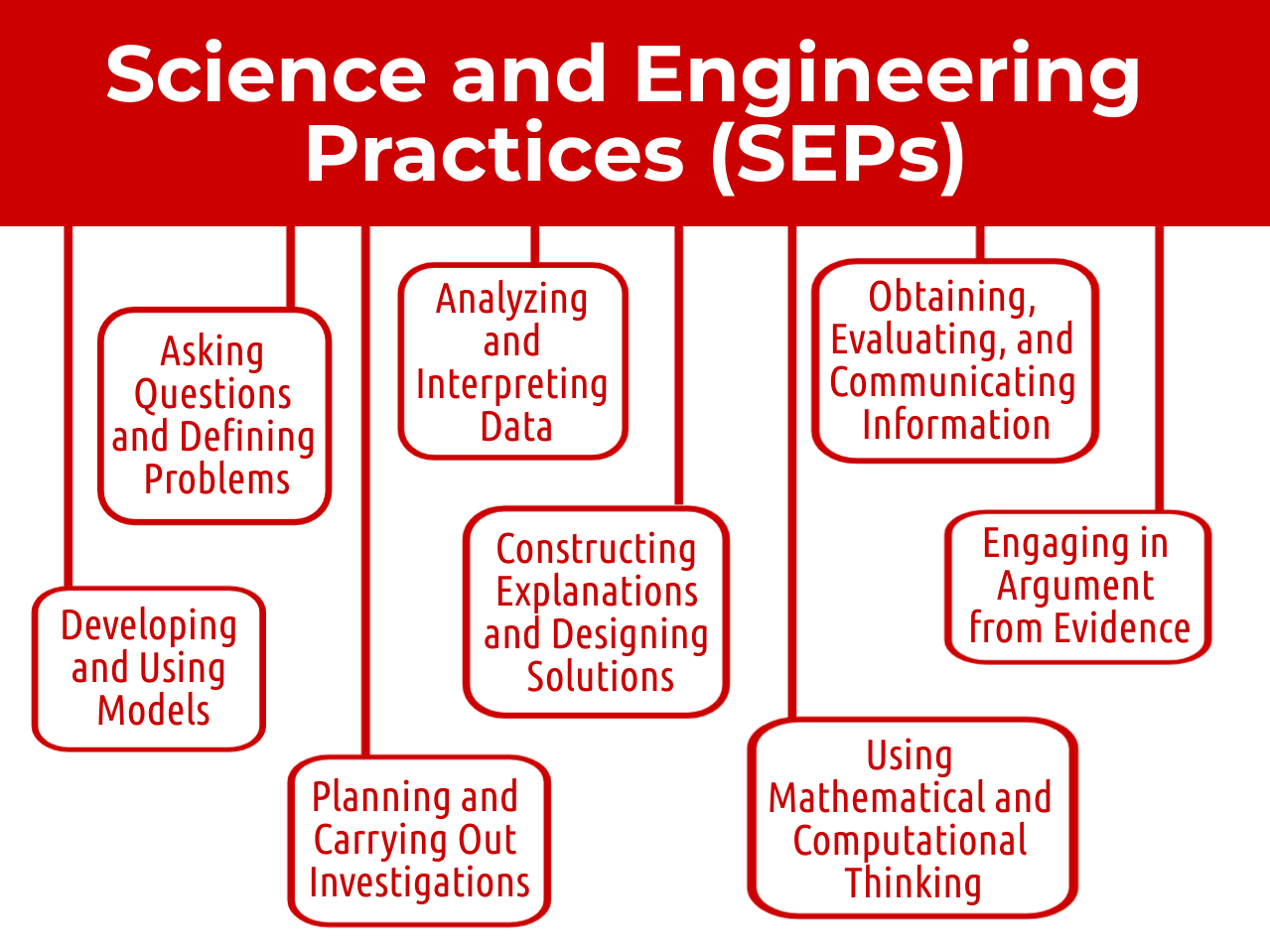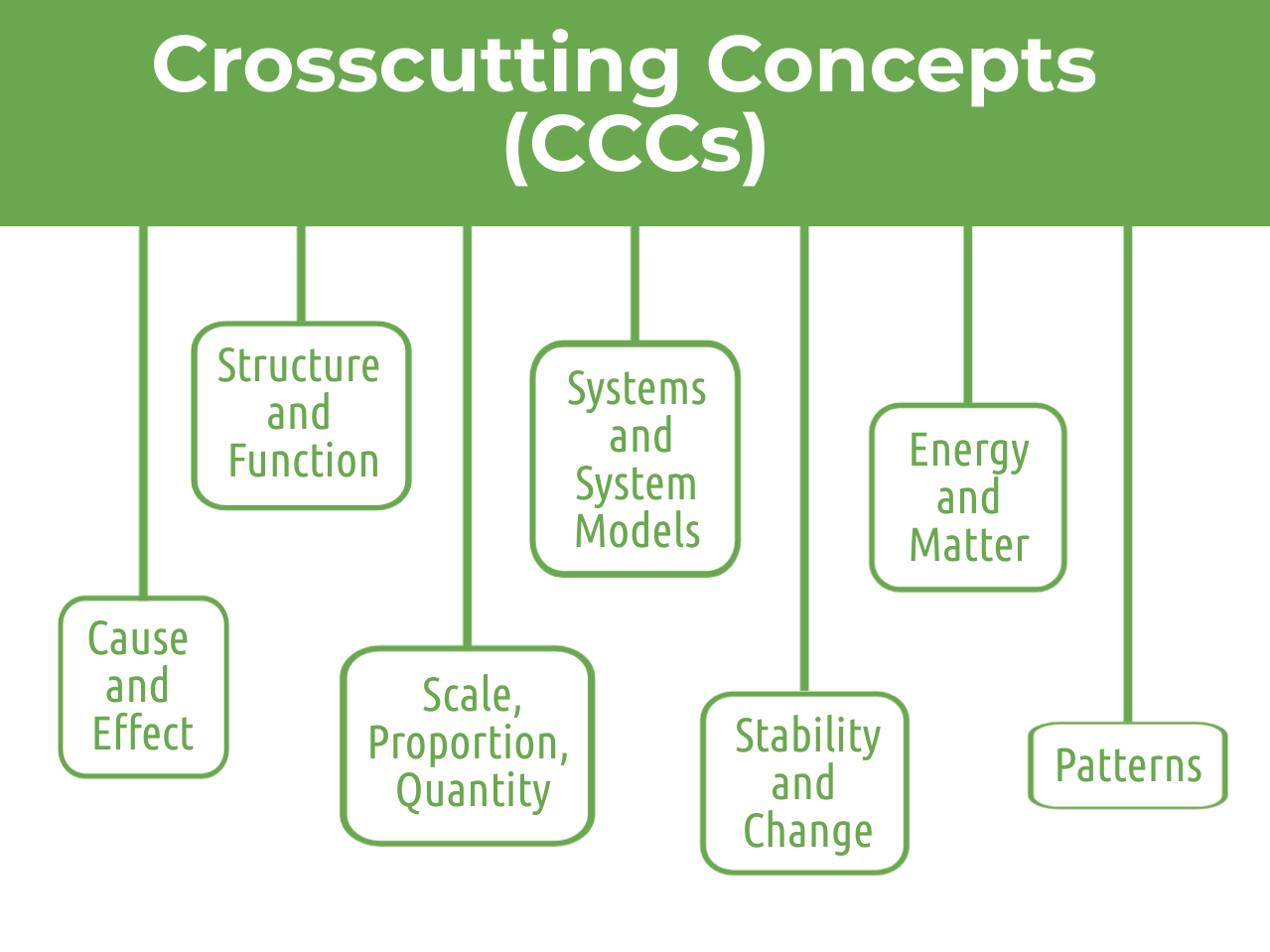Where and How to Begin with Phenomenon-Based Learning
Being told by the admin that you’ll be using a brand new learning approach in your classroom next year is often overwhelming and upsetting because it involves first learning and understanding a new process, then figuring out how to use a new set of strategies this process comes with, and then accepting the facts that:
You are being forced to change how you teach.
You will have to spend significant time adopting the new way and creating new lessons.
This is exactly what happened to me last year when our school district mandated the Next Generation Science Standards (NGSS) and Phenomenon-Based Learning (PhenBL).
So, I got right on it - I embraced working for free over the summer, sacrificed family time for curriculum writing, and thanked my admin team for the opportunity to better myself.
Good for you if you called bullshit on the statement above because my initial response was less than stellar. I was upset. Here I was - teaching chemistry - feeling like I really hit my stride in the last few years. I was building relationships and having fun helping teens learn. I had it figured out and I was doing a good job in preventing most kids from hating chemistry; and if you remember high school chem you know that’s a feat.
And now, all that was about to change and change is the very thing we’ve evolved to avoid and resist. Thanks to our amygdala, change brings on fears associated with uncertainty, discomfort, difficulty, lack of control, and incompetence. Change is hard.
So my lizard brain took over and I first wanted to quit, then find a job in some neighboring district, then switch professions ‘cause teaching’s such a pain in my back brain, and finally become financially free overnight by turning into a GOAT investor who consistently beats the stock market and lives the life. I even bought this book. I complained and cursed to anyone who’d listen too, because peace of mind turned to fear and fear to stress and stress sucks.
But then I remembered that I really like teaching, working with kids, my school, colleagues, and my principal who helped me create my flexible seating classroom and is always supportive. She came through this time as well and found a way to pay her science teachers for 40 hours of summer curriculum work. I know there are many school districts where teachers are forced to do this work for free and it blows and they are justified in their resentment of such disrespect.
I have no control of what district admins will do and what they do pisses me off sometimes. But since I have no control over them I chose to focus on what I can control, which is learning how to use this phenomenon-based thing. So I did and I started using PhenBL.
Here, I share how I interpret and use Phenomenon-Based Learning. I hope you find it helpful. This post is meant to help you figure out how to keep track of what students need to learn during the course of a PhenBL lesson - how to create a plan that will help you guide your students as they investigate on their own.
The main premise of PhenBL is not to give students any answers but have them find the answers for themselves and for teachers to mindfully guide them toward these answers. The “answers” are all of the concepts you want students to learn dictated by the learning standards you must follow. Phenomenon-Based Learning done right can help students avoid shallow learning as it stimulates diving deep into the lesson topics to find more thorough understandings.
planning for More complete learning using Phenomenon-Based Learning
Start with one core idea and make a quick concept map or an outline that breaks this idea down into main supporting ideas and the facts about them.
The core idea
This is the key concept or the essential question that translates the learning standard to something normal humans can understand. This is the big understanding that requires putting together multiple other understandings to be fully understood.
High School US History: Reasons for the United States Entering WWII
Middle School / High School Earth and Space Science: How Do Different Minerals Form?
The main supporting ideas
These are the few main ideas that provide major facts about the core idea. This could be a list of reasons for the core idea.
US History: Reasons for the United States Entering WWII (CORE)
The Japanese Attack on Pearl Harbor
Japanese Control of China and Asia
Germany's Aggression and Unrestricted Submarine Warfare Sinking U.S. Ships
Fear of German Expansion and Invasion
Earth and Space Science: How Do Different Minerals Form?
Precipitation
Volcanic Processes
Metamorphism
Weathering
Organic Deposition
The Facts
These are various important truths or basis students learn as they investigate the phenomenon. These facts lead them to uncovering the main supporting ideas for why the phenomenon happens, and ultimately learning the ins and outs of the core idea.
US History: Reasons for the United States Entering WWII (CORE)
The Japanese Attack on Pearl Harbor: Why did they attack? Why is Pearl Harbor important? What was the US initial response?
Japanese Control of China and Asia: How did they gain this control? Why does US care?
Germany's Aggression and Unrestricted Submarine Warfare Sinking U.S. Ships: Why are they provoking the US? How long has this been happening and why did US hesitate to respond? How does this affect the US economy and world standing?
Fear of German Expansion and Invasion: What are the global consequences of this? How does it affect the US? Is Germany even capable of attacking the US mainland?
Earth and Space Science: How Do Different Minerals Form?
Precipitation: Explain this process. Types of precipitation. Factors involved. Examples of minerals that form.
Volcanic Processes: Explain this process. Intrusive vs Extrusive. Factors involved especially heat. Examples of minerals that form.
Metamorphism: Explain this process. Types. Factors involved especially heat and pressure. Examples of minerals that form.
Weathering: Explain this process. Factors involved. Examples of minerals that form.
Organic Deposition: Explain this process. Factors involved. Examples of minerals that form and organisms that are involved.
This is the stuff you want your kids to learn - the core idea, the short list of main reasons that support it, and the details about each - as this creates a more complete picture; as opposed to leading students to regurgitation of facts on the test they will forget shortly after the test. You know, the status quo.
Chances are you are already doing a version of this when planning lessons or units of study, because it involves nothing more than backwards design - figuring out the unit, or the lesson takeaways first - followed by planning the activities that help students learn these takeaways and assessments that prove they’ve learned this content.
Then, you create a storyline. A carefully chosen phenomenon begins the story. The activities that follow are parts of the storyline and the performance assessments culminate it. But let’s use the KISS method - one thing at a time, ‘cause easy does it. Till next time.
Did you find this post helpful? The next one will dive into Choosing a Phenomenon. Sign up for my Teaching Tips, Resources, & Ideas Newsletter to get it when it drops. It’s totally free.
BOOKS & TOOLS
- December 2025 1
- September 2025 2
- August 2025 5
- July 2025 4
- June 2025 2
- August 2024 2
- July 2024 2
- June 2024 1
- October 2023 1
- September 2023 3
- August 2023 6
- July 2023 6
- July 2022 2
- June 2022 1
- November 2020 3
- October 2020 3
- April 2020 1
- March 2020 5
- July 2019 1
- June 2019 1
- April 2019 1
- January 2019 1
- November 2018 3
- October 2018 2
- September 2018 1
- August 2018 8
- July 2018 11
- June 2018 4
- May 2018 5
- April 2018 2
- March 2018 4
- February 2018 5
- January 2018 3
- December 2017 1
- November 2017 5
- October 2017 7
- September 2017 6
- August 2017 5
- July 2017 3
- June 2017 10
- May 2017 7
- April 2017 7
- March 2017 15
- February 2017 12
- January 2017 13
- December 2016 15
- November 2016 8
- October 2016 7
- September 2016 12
- August 2016 14
- July 2016 10
- June 2016 13
- May 2016 10
- April 2016 8
- March 2016 5
- February 2016 7
- January 2016 6
- December 2015 5
- November 2015 8
- October 2015 2
























